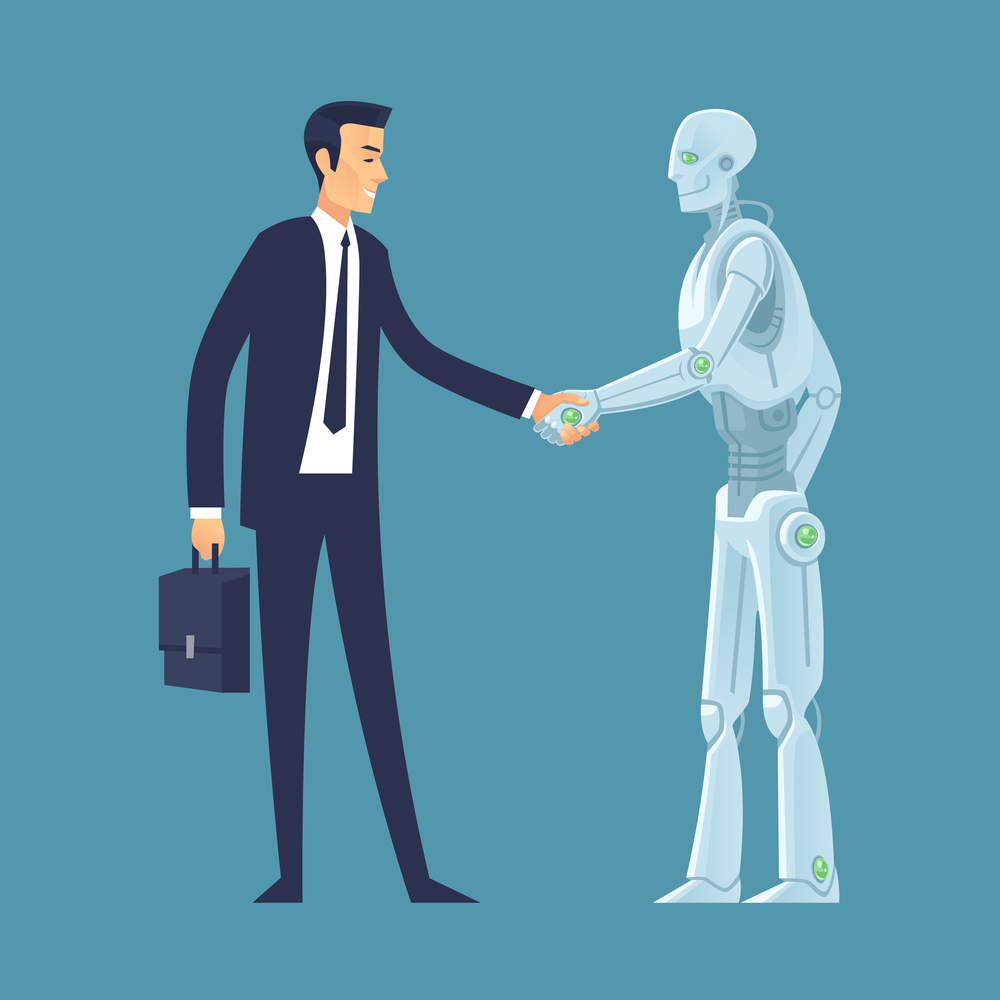“Trade secrets and AI are a natural fit. Trade secret law developed much more recently than patent or copyright law and can adjust for the inherent technical issues that arise from protecting information created by AI.”
 Generative AI (“Gen AI”) is everywhere, with all sorts of promises about how it can help the world. Let’s say a company has created new confidential methods for cancer treatments, but they are not really effective. They ask a Gen AI to come up with a cure for cancer using these new methods. The gen-AI (using the billions of words and images available to it beyond human comprehension) conceives of the cure, and it works, saving many lives. [Note: Generative AI (“Gen AI”) as used herein will refer to deep-learning models that can generate high-quality text, images or other content based on the billions of pieces of data they were trained on].
Generative AI (“Gen AI”) is everywhere, with all sorts of promises about how it can help the world. Let’s say a company has created new confidential methods for cancer treatments, but they are not really effective. They ask a Gen AI to come up with a cure for cancer using these new methods. The gen-AI (using the billions of words and images available to it beyond human comprehension) conceives of the cure, and it works, saving many lives. [Note: Generative AI (“Gen AI”) as used herein will refer to deep-learning models that can generate high-quality text, images or other content based on the billions of pieces of data they were trained on].
Who owns this cure? Is it the company that had some ineffective methods they input into the Gen AI, is it the developer of the Gen AI who ingested that information and conceived of the effective cure, or is the information now public because it has been disclosed to a Gen AI? This article explores why trade secret law fits gen-AI innovations rather than other IP schemes, and how creators can be incentivized to use this new technology without risk of losing their valuable information.
Trade Secrets Are Strong and Flexible Protection for Gen AI
The above “cure” appears to qualify as a trade secret. AI-generated information that has value can clearly meet the criteria for trade secret protection. Under the Defend Trade Secrets Act (DTSA) as well as in various related state acts, a “trade secret” is broadly defined as “information” that derives independent economic value from not being generally known or readily ascertainable. See 18 U.S.C. §1839(3). A Gen AI can create information satisfying these criteria as the information created by a Gen AI is not generally known or readily ascertainable, since only the Gen AI knew the newly-created information. It uses software beyond human intelligence to create “information” (flexibly defined as including patterns, plans, compilations, formulas, etc.), which, because it was created by software and not by humans, is not generally known or readily ascertainable.
While it is possible that this information may fail these criteria, the intent of a “generative” AI is to ingest information (i.e., the “input”), and create new information in a way that a human would not know (i.e., the “output”). Therefore, the whole point of using a Gen AI is to create new information that would not be generally known. While it is possible that the Gen AI would simply output information that is already generally known, it is also likely that the Gen AI would output something not generally known and therefore protectable as a trade secret.
An argument can be made that just about anything created by a Gen AI is a trade secret, because the combination of the input along with the Gen AI created something new, the output, that did not exist beforehand. If either the input or output has some value, it can be a trade secret. In fact, all three stages of Gen AI could qualify: the input from a human, the information applied by a Gen AI to that input, as well as the output that is returned to a human.
Given the unique role of trade secrets in U.S. law, companies should build regimes to maintain such innovations as trade secrets. Trade secrets are protected under both federal and state law, and are also protected under criminal laws. Trade secrets can be enforced domestically and internationally. Trade secrets are also flexible, they do not have to be registered formally with the government or validated by any examination process.
Trade Secret Law Is Uniquely Equipped to Protect Non-Human Innovations
Other types of IP protection appear unavailable for Gen AI information because they all require human inventors and creators. In test cases to date, all attempts to protect the intellectual property of a Gen AI under patent or copyright law have failed. The Patent Act requires a human inventor. See Thaler v. Vidal, 43 F.4th 1207, 1210 (Fed. Cir. 2022) (“Here, there is no ambiguity: the Patent Act requires that inventors must be natural persons; that is, human beings.”). The Copyright Act requires human authorship as well. Thaler v. Perlmutter, 2023 WL 5333236, *4 (D.D.C. Aug. 18, 2023) (“Copyright has never stretched so far, however, as to protect works generated by new forms of technology operating absent any guiding human hand, as plaintiff urges here. Human authorship is a bedrock requirement of copyright.”); Naruto v. Slater, 888 F.3d 418, 420 (9th Cir. 2018) (“monkey selfie” not protected by copyright since animal author was not human).
There is no requirement that a trade secret be developed by a human. In fact, a trade secret owner can be either a person or an entity. See 18 U.S.C. §1839(4) (“the term ‘owner’, with respect to a trade secret, means the person or entity in whom or in which rightful legal or equitable title to, or license in, the trade secret is reposed”). Thus, a trade secret is essentially the only IP right that a generative AI-related invention can be clearly owned by a person or entity.
Trade secret protection for Gen AI is likely the best protection. The founding fathers never imagined there would be computer-created inventions when they documented the initial patent and copyright laws, so those fundamental intellectual property laws do not appear to provide protection and are not flexible enough (at least to date).
Gen AI Can Destroy Trade Secret Protection Unless ‘Reasonable Means’ Are Used
The second criteria for a trade secret is that reasonable means are used to keep that valuable information secret. It is not yet resolved what would constitute reasonable means for protecting trade secret information created using Gen AI. Recently, there were concerns when software developers from a large company put proprietary information into ChatGPT, with the company responding by limiting the information the company allowed to be inputted into ChatGPT. Moreover, even the ChatGPT programmers do not know what ChatGPT knows, so presently it would be unreasonable to assume that a trade secret disclosed to ChatGPT would be kept confidential.
Publicly available Gen AI systems like ChatGPT are not currently equipped to determine between confidential and non-confidential information. This is likely to be short-lived. The answer will likely be an option in Gen AI systems that certain inputs (and outputs) can be designated as confidential and only available to certain users, whether through encryption or manual methods of protection like terms of use or license agreements. In addition, the Gen AI developer also holds its own contribution as its own trade secret, such as how the billions of images and words are used to train their models. Even today, some of the commercially available Gen AIs are implementing a proprietary mode where companies can designate some of the information output as confidential already, so “reasonable means” for keeping inputs and outputs confidential appears possible and qualifying as a trade secret. This would simply be an implementation detail in the way that the information is disclosed. Companies can then license these trade secrets to prevent the output from becoming public. If the output becomes public, there is a risk that any trade secret protection would be lost.
Trade Secret Law Is Also Proper to Protect Against Misappropriation
While trade secret protection appears apt, the question remains whether trade secret protection is relevant to Gen AI because misappropriation requires acquisition by “improper means.” This limits the potential to enforce valuable information generated by Gen AI, but it also appears right. If it’s “generally known” or “readily ascertainable” which input to provide to obtain an output, then it is not a trade secret. But if it is secret, then no one else should be able to obtain the same output. If they did, then they likely obtained the information by improper means. Thus, there was misappropriation.
So, while the potential for misappropriation of an AI-generated innovation would appear narrow to someone obtaining the input, or having access to the Gen AI that ingested that input, trade secret law would provide protection in that scenario (as long as the output is similarly kept confidential). The ingestion of that input by a Gen AI could also be trade secret misappropriation since there may be value to the Gen AI’s use of that information in being trained on it. In the above example, the company with the valuable, but previously ineffective methods, would be protected if they keep the information confidential. No one else should be able to create the same output “cure”, and if they did, it is likely because of misappropriation.
Importantly, trade secrets can be licensed as an intellectual property right as well, such that a company could license their valuable trade secrets involving input, Gen AI, and outputs to take advantage of the valuable information created and protect against misappropriation. Other types of IP protection would be unnecessary since they can enforce against anyone, unless it was achieved independently. While not a “monopoly”, it achieves the same effect as any new invention or new creation.
A Natural Fit
Trade secrets and AI are a natural fit. Trade secret law developed much more recently than patent or copyright law and can adjust for the inherent technical issues that arise from protecting information created by AI. Companies must still be vigilant about protecting AI as trade secret information because it is easy to lose trade secret status. Companies should develop policies and procedures to prevent potentially valuable AI information as trade secrets.
Image Source: Deposit Photos
Author: Tanciu
Image ID: 185548094

![[IPWatchdog Logo]](https://ipwatchdog.com/wp-content/themes/IPWatchdog%20-%202023/assets/images/temp/logo-small@2x.png)

![[Advertisement]](https://ipwatchdog.com/wp-content/uploads/2024/05/Quartz-IP-May-9-2024-sidebar-700x500-1.jpg)
![[Advertisement]](https://ipwatchdog.com/wp-content/uploads/2024/04/Patent-Litigation-Masters-2024-sidebar-700x500-1.jpg)

![[Advertisement]](https://ipwatchdog.com/wp-content/uploads/2021/12/WEBINAR-336-x-280-px.png)
![[Advertisement]](https://ipwatchdog.com/wp-content/uploads/2021/12/2021-Patent-Practice-on-Demand-recorded-Feb-2021-336-x-280.jpg)
![[Advertisement]](https://ipwatchdog.com/wp-content/uploads/2021/12/Ad-4-The-Invent-Patent-System™.png)






Join the Discussion
No comments yet.